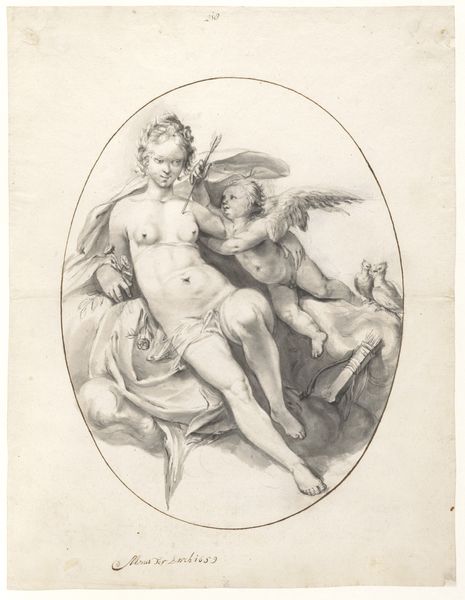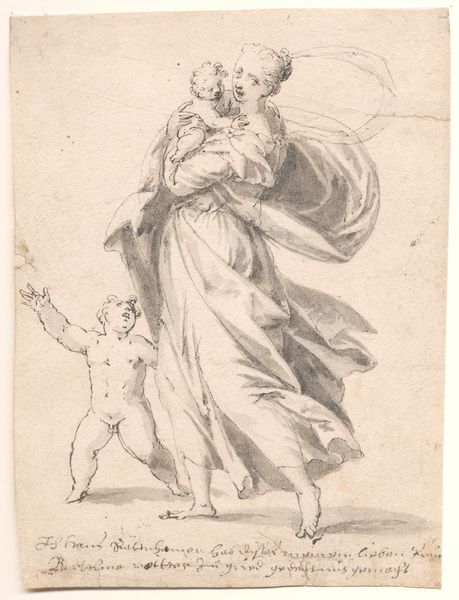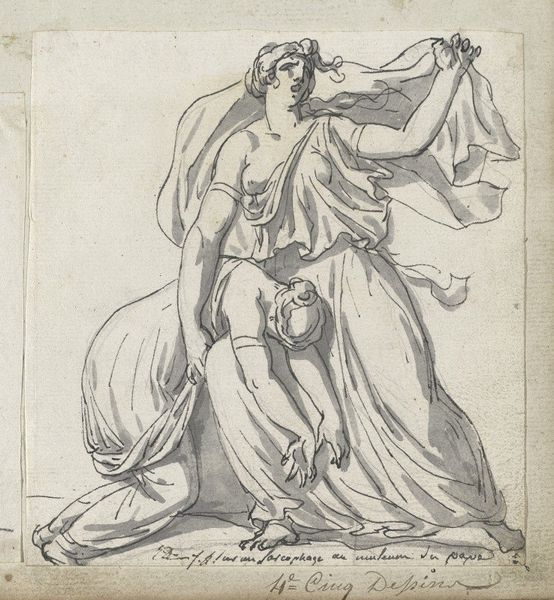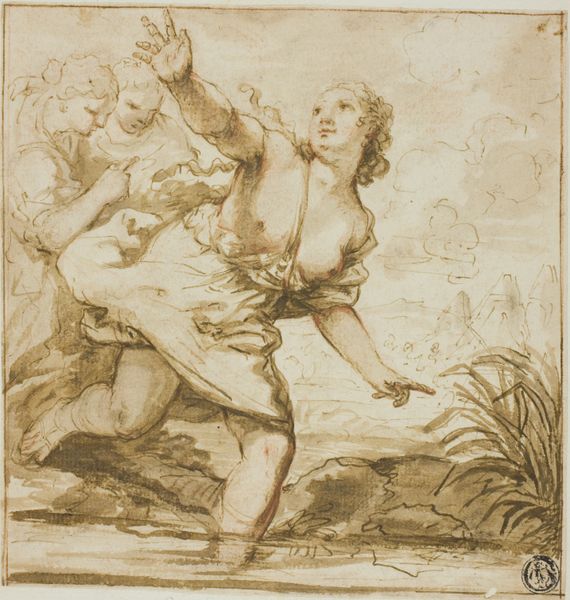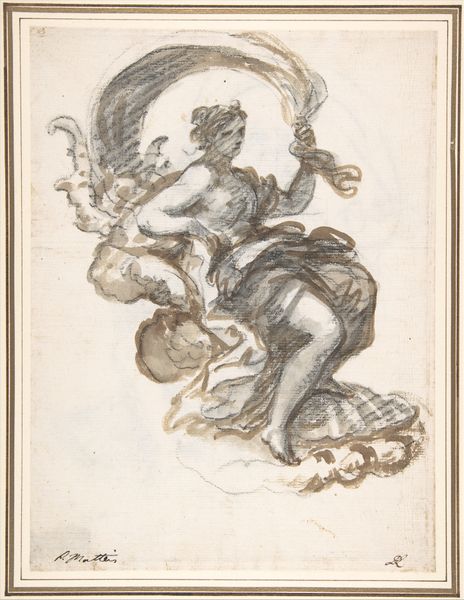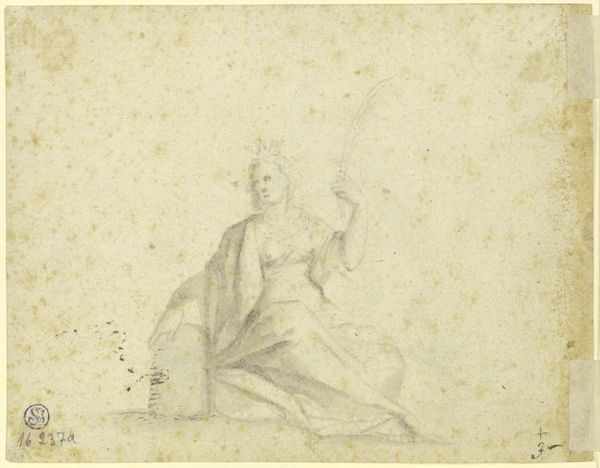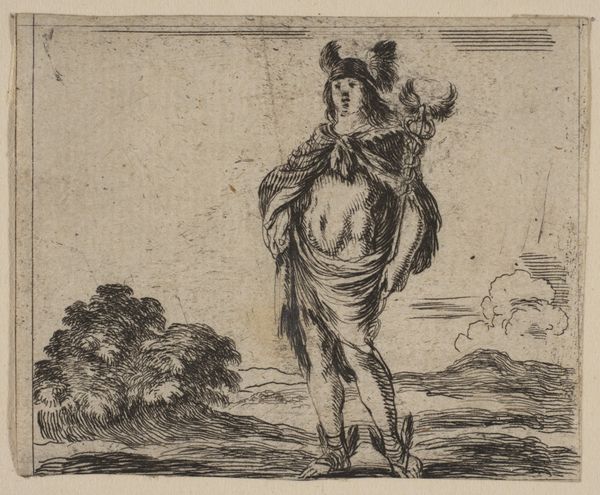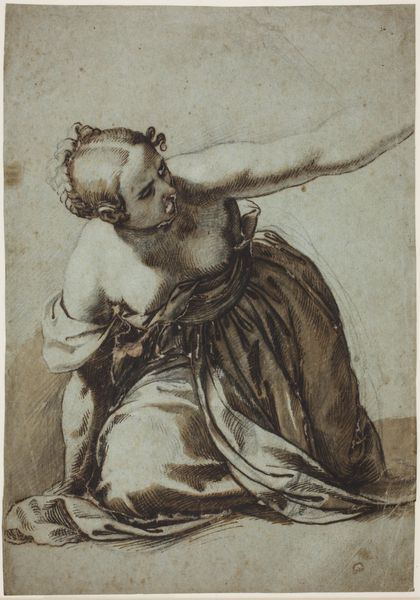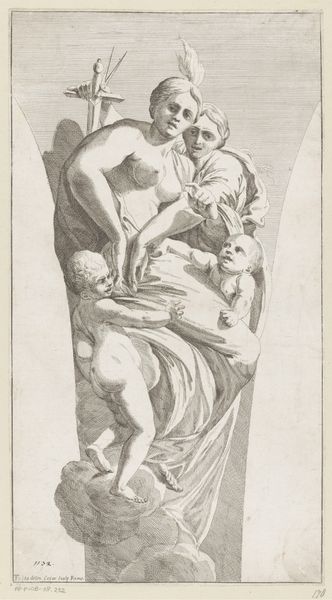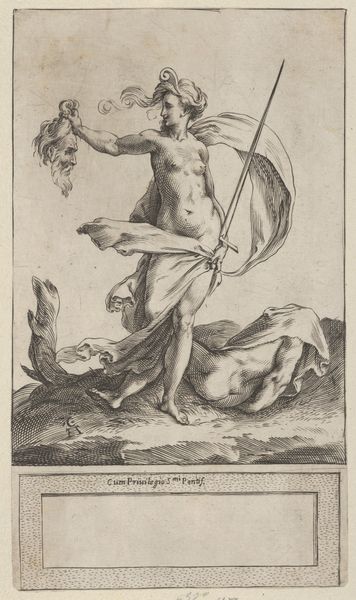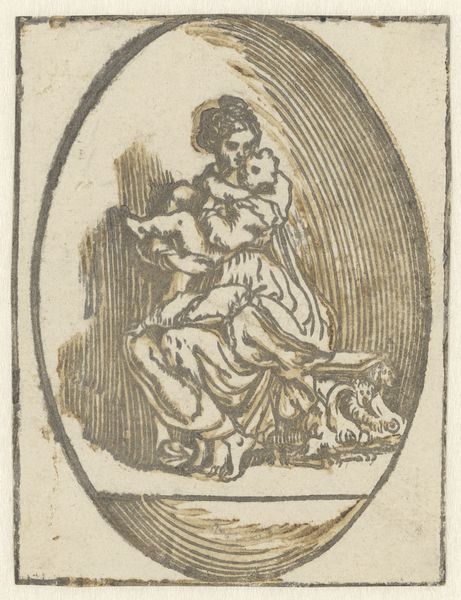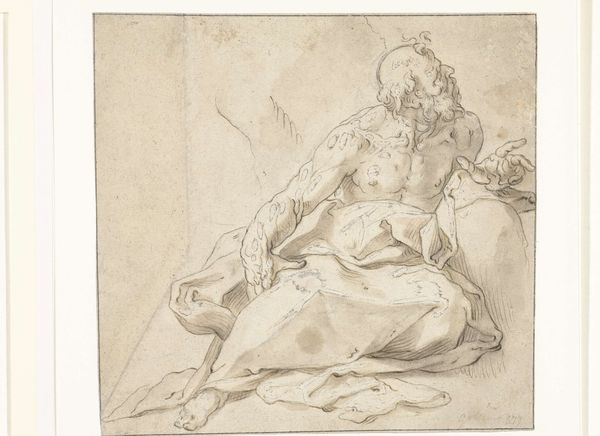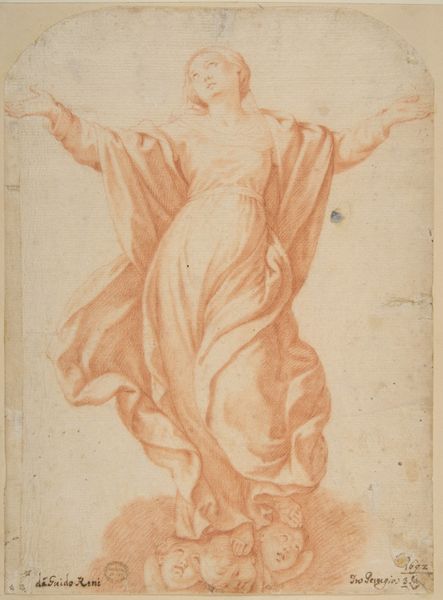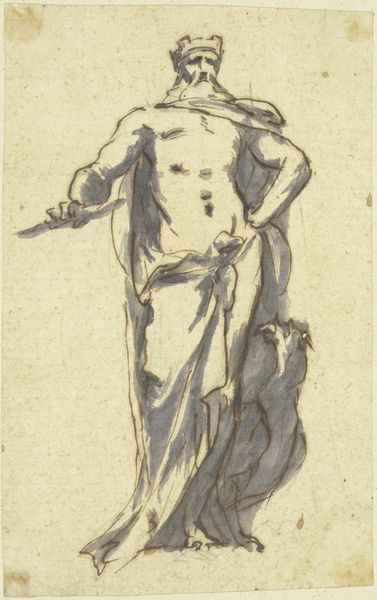
drawing, paper, ink
#
drawing
#
allegory
#
baroque
#
paper
#
ink
#
nude
Dimensions: height 141 mm, width 181 mm
Copyright: Rijks Museum: Open Domain
Editor: This drawing, "Hunter and Nymph" by H. Roucoma, created in 1698, utilizes ink on paper to depict what seems to be a scene of vulnerability, contrasting a seated hunter with a nymph. The lightness of the paper lends a dreamlike quality, while the hunter seems passive, his bow lying next to him. What formal qualities stand out to you most in this piece? Curator: The elegance of the composition is immediately striking. Roucoma's delicate use of line and shading creates a visual hierarchy. Notice how the bodies intertwine, yet remain distinct through the articulation of form. Semiotically, the bow, usually an emblem of power, lies dormant, challenging conventional readings of masculine agency. The interplay between the hunter’s grounded posture and the nymph’s more ethereal presence underscores a complex dialogue of power and sensuality, no? Editor: Yes, the bow's passivity and the nymph's protective gesture create a striking visual tension. Do you see any baroque elements at play in this ink drawing? Curator: Indeed. The flowing drapery, the idealized figures, and the theatrical lighting all point towards a Baroque aesthetic. However, Roucoma’s restraint distinguishes this piece, opting for subtle expressiveness over grand spectacle. The linear precision and balanced asymmetry signal a controlled emotional register, reflecting a nuanced approach within the broader Baroque framework. What theoretical frameworks might you apply? Editor: Thinking about it now, perhaps a feminist lens could further expose hidden notions about gender. I see this drawing with a new perspective. Thanks! Curator: Precisely! It has been my pleasure.
Comments
No comments
Be the first to comment and join the conversation on the ultimate creative platform.
